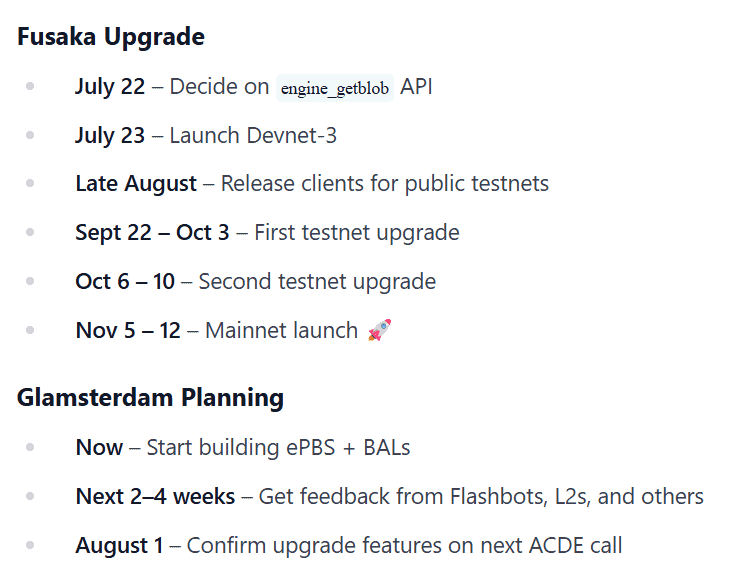The rise in Ethereum’s popularity continues, with developers preparing another significant update for the network.
This upcoming enhancement, focused on scalability, resistance to censorship, and user experience, marks the second major upgrade on this year’s agenda for the decentralized blockchain.
A New Achievement for the Network
The core team behind Ethereum, the second-largest cryptocurrency by market value, has set an early November timeline for the Fusaka upgrade’s mainnet launch, aiming to boost network efficiency and scalability.
The subsequent Devnet (Devnet-3) is slated for launch in two days, while decisions for the Glamsterdam upgrade, following Fusaka, will be made in the coming weeks.
To expedite testing, one Ethereum Improvement Proposal (EIP), specifically 7907, which proposed modifications to smart contract code size limits, was omitted.
If everything progresses smoothly, this upgrade will roll out just six months after Pectra’s release, demonstrating the network’s swift growth and development.
For context, Dencun went live in March 2024, enhancing Layer-2 solutions, followed over a year later by Pectra, which improved wallet functions and increased the validator limit.
Prior to Fusaka’s official launch, two public test networks will be initiated in September and October.

Nixo, a protocol support member, expressed concerns regarding the current timeline for Fusaka’s release, highlighting the tight schedule and the goal to launch before Devconnect 2025 begins.
Devconnect, an event showcasing Ethereum applications, will take place in Buenos Aires, Argentina, at the end of November, shortly after the anticipated Fusaka launch.
What Will the Upgrade Include?
Several proposals are planned for inclusion in the forthcoming Fusaka upgrade later this year.
Among these, EIP-7594: PeerDAS, or Peer Data Availability Sampling, will be a standout feature.
DAS scales data availability beyond EIP-4844’s capabilities by ensuring all information is available without requiring all nodes to download all data.
EIP-7825: Transaction Gas Limit Cap is another proposal, introducing a cap on gas used per transaction, serving as a security enhancement for the network.
Also notable is EIP-7934: RLP Execution Block Size Limit, which aims to set a maximum RLP-encoded block size and a beacon block size margin, reducing the risk of DoS attacks.
The post Ethereum’s Fusaka Upgrade Scheduled for November Launch, Glamsterdam Next in Line appeared first on CryptoPotato.






